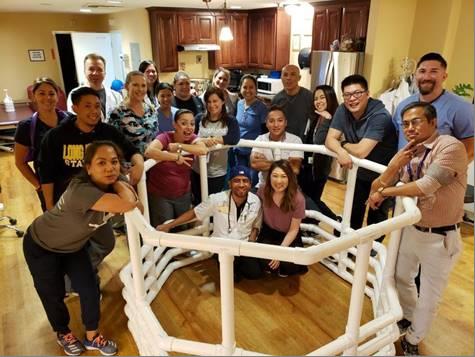By Chad Long, Therapy Resource
As we close out June, we find ourselves only three months away from PDPM! So how are we doing?
Overall in May we are providing 5% clinically appropriate Group & Concurrent to all Payers and 17% to our Non-PPS Payers.
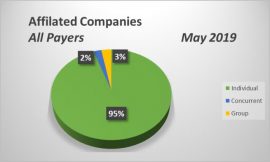
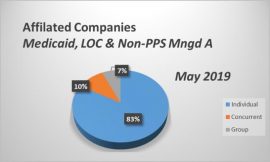
How does each affiliated company stack up? Here are a few stats through May:
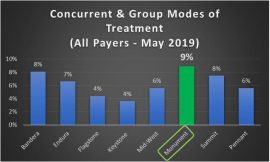
Highest percentage for All Payers in May goes to … Monument! Great job last month with 9%!
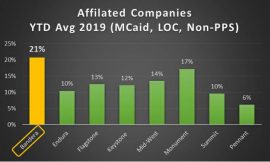
Best performance Year-to-Date for Non-PPS payers goes to … Bandera! They’re consistently delivering over 20% in functional multi-participant therapy programming!

Who has had the greatest increase from January to May? Midwest increased 13% in May compared to the beginning of 2019!
Each company has made significant gains in statistical improvement; however, what does that say about quality? Every week, we see emails about highly skilled functional groups from several facilities. Here are a few great examples to follow:
THE SOUTHLAND OCTAGON
The “Southland Octagon” was their creation in order to have functional, skilled and evidence-based group programming. For example, each bar was carefully measured to also allow for functional assessments such as the seated step test. 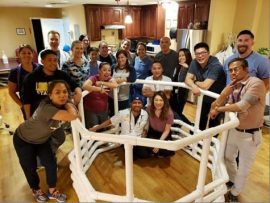
Additionally, they developed clinical group treatment protocols such as:
Functional Transfer Group
Equipment:
Southland Octagon, blood pressure, stethoscope, pulse oximetry, RPE scale/Borg Scale, standard height chair and patient’s own W/C
Purpose:
- To strengthen LE Hip & knee extensor and Hip Abductor/Adductor group of muscles to improve functional transfer
- To promote safe functional transfer technique
- To promote motor learning through repetition
- For the individual to learn, encourage and motivate one another
Procedure:
- Therapists and pts may introduce themselves to each other. Briefly discuss the goal.
- Check and record vital signs, RPE and pulse oximetry.
- Demonstrate the task.
- Patient is instructed to stand up (may utilize arm rest) and hold on to the Southland Octagon bar.
- Make two to three side steps to the next practice chair (return to/from)
- Let the patient repeat as many as possible until they feel fatigue.
- Observe and record the form, smoothness of movement, movement compensation, etc.
- At the end of the last attempt, have the individual sit, take and record BP, HR, RR, PRE and oxygen saturation.
Seated Step Group
Equipment:
Southland Octagon, blood pressure, stethoscope, pulse oximetry, RPE scale/Borg Scale,
metronome (set at 60 bpm)
Purpose:
- To strengthen LE Hip flexor and knee extensor group of muscles to improve mobility
- To improve aerobic capacity and endurance
- Suitable for those unable to stand up safely with less assistance
- For the individual to learn, encourage and motivate one another
Procedure:
- Therapists and patients may introduce themselves to each other. Briefly discuss the goal.
- Check and record vital signs, RPE and pulse oximetry.
- If one of your goals is to improve aerobic capacity, determine target heart rate (Karvonen’s formula). Monitor heart rate during the procedure.
- Demonstrate the task.
- Patient is instructed to alternately touch each foot to the edge of the step at the rate of set bpm (metronome) to touch the edge of the step; next beat brings the foot to the floor, and next beat the opposite foot touches the edge of the step.
- Let the patient repeat as many as possible until they feel fatigue.
- Observe and record the form, smoothness of movement, movement compensation, etc.
- At the end of the last attempt, take and record BP, HR,RR, PRE and oxygen saturation.
Progression:
- May progress to 12”, to 18” with UE movement. Right shoulder flexion to 90 degrees when raising right Leg. Repeat with the opposite side.
Sit to Stand Group
Equipment:
Southland Octagon, blood pressure, stethoscope, pulse oximetry, RPE scale/Borg Scale
Purpose:
- To strengthen LE extensor group of muscles and improve functional transfer
- To promote motor learning by repetition
- For the individual to learn, encourage and motivate one another.
Procedure:
- Therapists and patients may introduce themselves to each other. Briefly discuss the goal.
- Check vital signs, RPE and pulse oximetry.
- Demonstrate the proper form of doing sit <> stand.
- Patient is instructed to stand up (patient may utilize the arm rest), hold on to the Southland Octagon bar then sit down, doing as many as possible until they feel fatigue.
- Observe and record the form, smoothness of movement, movement compensation, etc.
- At the end of the last attempt, have the individual sit, take and record BP, HR, RR, PRE and oxygen saturation.

